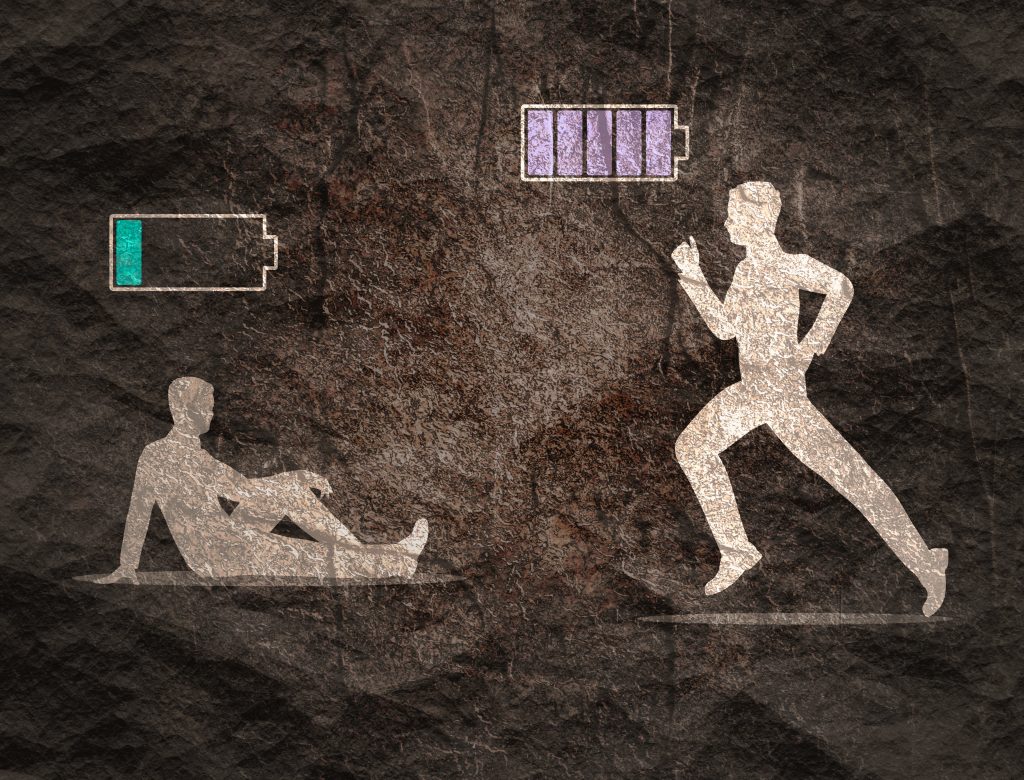The Art of the Indicator Set
The 21st century has graced us with a bevy of technological advances:
- High-speed internet.
- Telescopes that now treat us to images of Black Holes
- Nanotechnology to help improve manufacturing, healthcare, climate change, and agriculture.
- Pizza crust made out of cauliflower.
The health/fitness sector has also benefitted. Trainers have the ability to work with clients from all over the world in real-time.
Seriously, cauliflower is now used to make pizza crust! Even more miraculous is that it doesn’t taste like sawdust.
We also have the capability to measure things like bar speed and heart rate variability via applications on our phone; all of which provide data to help us gauge our “readiness” to train on any given day.
Technology surely is great.
However, when it comes to ascertaining one’s readiness to train I tend to lean more toward the anti-app route, and instead rely on what I call “INDICTOR SETS.”

Copyright: jegas
What the Heck Is An Indicator Set?
The easiest way to explain is via some anecdotal observances.
I was walking to my studio to train the other day where the plan was to show up, warm-up, crank a little Mobb Deep over the stereo, get angry enough to want to fight a tornado, and work up to a heavy(ish) triple on my deadlift (535 lb).
On paper it looked like a done deal.
But once I started warming up, things didn’t go quite as planned:
135 x 5
225 x 5
315 x 3
405 x 1 (didn’t feel horrible, but didn’t feel great)
455 x 1 (INDICATOR SET)
An indicator set basically lets me know whether or not I have “it” that day.
For instance, in the previous two weeks, 455 lbs (which is ~80% of my 1RM) literally flew up. Based on “feel” of my bar speed, and how effortless the set felt, I knew I could make a run for a high 500’s pull.
Put another way, I gave myself the green light to go for it, and I did.
Conversely, 455 felt like absolute garbage the other day.
It felt slow off the ground. And it felt even slower at lockout, which I normally never have any issues with. The indication was: “Tony, if you attempt to go any higher you’ll run the risk of shitting your spine.”
So, I did the smart thing and called it.
I re-racked the plates, turned the page, and did my accessory work: DB reverse lunges, a little pouting in the corner, and some pull-throughs.
Listen, it’s not a perfect system, nor is it anything remotely scientific. To be as transparent as possible: I am not anti-technology. But I am anti-technology to the point that many (not all) people tend to miss the forest for the trees when it comes to their readiness to workout.
If their Apple watch indicates a modicum of fatigue they’ll shut that shit down faster than you can say, well, apple.
Just because your watch says you should avoid training on any given day doesn’t necessarily mean you have to. Besides, I’m not entirely sold on the reliability of those apps anyway. I’ve had clients walk into a session feeling like a million bucks only to have their watch tell them danger, danger, DANGER, and to not even look at a barbell.
On the flip side, I’ve also had clients show up feeling like they made out with a petri dish, only to warm-up, move around a little, and then feel like Leonidas leading the Spartans to battle.
Indicator sets help you learn to FEEL whether or not you’ve got the juice on any given day. In short: It’s a form of auto-regulation that helps you to not have to rely on some algorithm.
Plus, it’ll save you a few hundred dollars…😙
At least in this scenario you’ll have some tangible, performance-based evidence to help you gauge things. Muscle fatigue is one thing and tends to be easier for many people to use as a metric.
If you’re overly sore you can feel that and tweak your programming accordingly. CNS (or nervous system) fatigue is a bit more nebulous and harder to pinpoint, or even feel for that matter.
Indicator sets help you with the latter.
To that end, I encourage you to start utilizing indicator sets as part of your warm-up on the days you know you’re going to be pushing the envelop.
Pick a weight during your warm-up that you can use to “gauge” where you’re at that particular day. This number should be heavy enough to be challenging, but one you KNOW you can perform fast and with immaculate technique.
(this will likely be around 80% of your 1 rep-max)
Trust me. The whole mindset of lift heavy or go home – while admirable – isn’t always the best approach.



Comments for This Entry
Shane K McLean
I approve of this message. Great post coach.November 8, 2021 at 8:11 pm |
Jim Nonnemacher
totally agree with you on "indicator sets." I was always asking them how does the weight feel, or asking (telling?) them to feel the movement not just lift the weights, do the reps and set the barbell down. Gadgets are neat but you can't take them on the platform.November 9, 2021 at 6:10 pm |